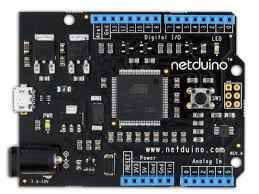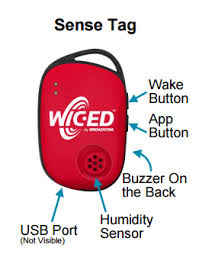Tuesday Technology Thoughts – Protoyping IoT usecases
Though IoT become buzz word, there are few myths around it. I am making an effort to break those myths.
Before that, let me put down few thoughts – Which are not IOT.
IoT is not just attaching sensors
IoT is not prediction and big data analytics
IoT is not connecting things
IoT is not automation
It is combination of all scenarios. So it is essential to make a prototype before the idea is built into industry standards. Steps involved:
- Ideation
- Prototyping
- Proof of business
- Industrialization
- post production and support
Hence it is important to make prototypes to make one believe. There are few myths around making prototypes.
Consider an example :
Usecase : When someone enters in the restricted zone, alarm lights should flash and hooter need to make alarm. Automated email and App notification need to be sent to owners.
Prototype:
This complicated case can be easily made into prototype using the below items
a) Simple MCU board
b) Motion sensor
c) Pizzo buzzer
d) leds
e) PC
One can understand prototype minimized the effort involved without diluting the business scenario.
Thus by using simulation , Prototype can be demonstrated to the business owners and results can be extrapolated.
What are the myths around prototyping IoT usecases
1) Skillset – Embedded knowledge and languages
2) Soldering
3) Cost
4) Complexity
Let me break them one by one:
Myth :Skillset (Embedded knowledge) – I do not know electronics
Fact: For making simple prototype, deep skillset is not required. One need not know c++ or other low level languages. Any java developer can build prototypes , Node based javascript supports. Plain .Net developers can use .net to build prototype using Netduino boards.

Myth : Soldering is required- I do not know it or I am afraid of it
Fact: Soldering is not required for simple prototype models. Bread boards can help to get rid of soldering. Most of the boards have GPIO pins. All you need to have is set of single core wires and bread board.
Normal electrical wires are multicore wires (meaning there will be multi threads when you cut). Single core means, single wire.
Now fear about electrical myth can be demystified by using proper converters/adapters. Supply only 5 volt or 3 volt to the bread board, thus no need to fear about high voltage shock.
Myth : IoT prototyping will involve huge cost. I may not have enough approvals.
Fact: Cost of many development boards are nominal and related software is most often open source. There are many cheap boards of Arduino varieties available – Freeduino is half the cost of original Arduino . Arduino Uno cost is around 1100 INR.
Bread board is 200 INR. Within Rs 5000/- a decent prototype can be built.
Myth : IOT prototype is highly Complex.
Fact: IoT prototyping is easy. Many a times, students take up the projects. UK heavily supports and provided 1 million development boards to the youngsters. My 9th grade daughter had done few prototypes already. So it is no so complex as one imagine. It is simple.
Having cleared the myths, few tips on choosing the boards and availability of boards.
Arduino ( There are many custom Indian variations available,.I use Induino board from Simplelabs.co.in)
Mediatek’s LinkIT
Texas instrument CC2300
TI Sensortag
Broadcom’s WICED






